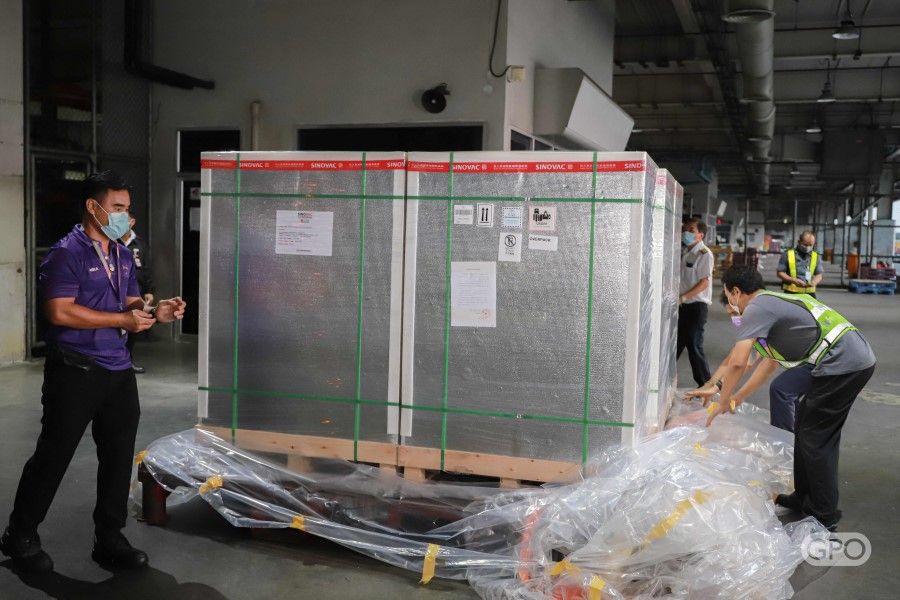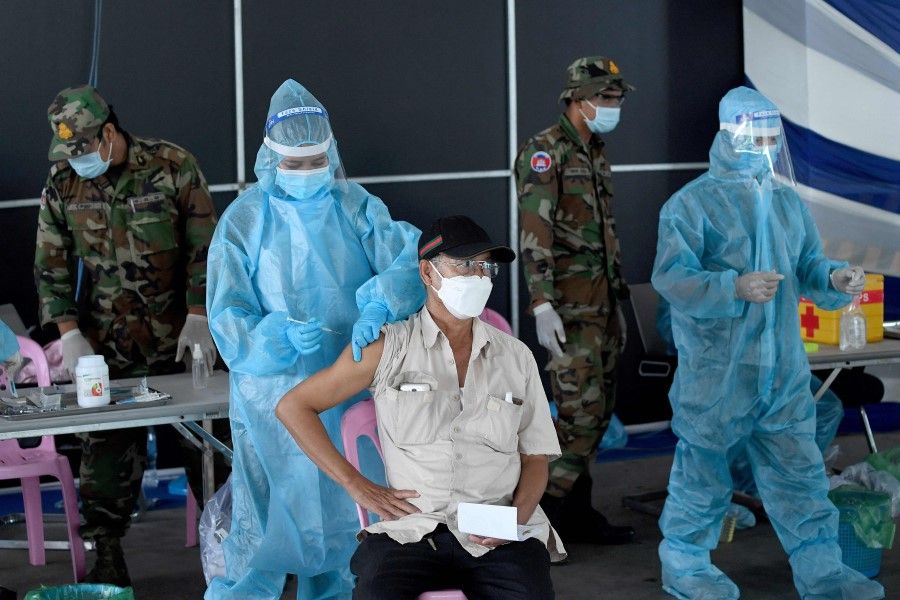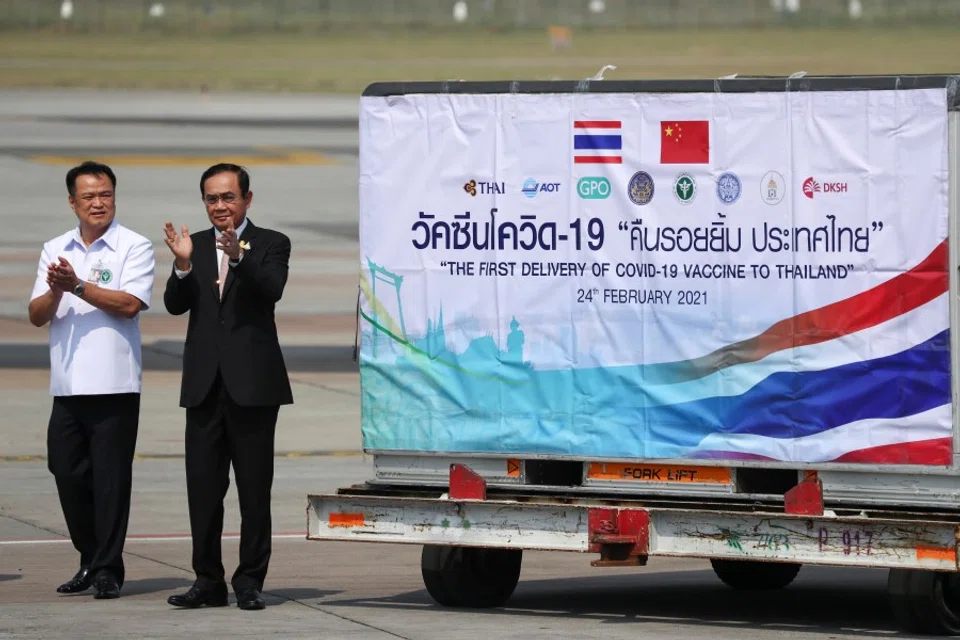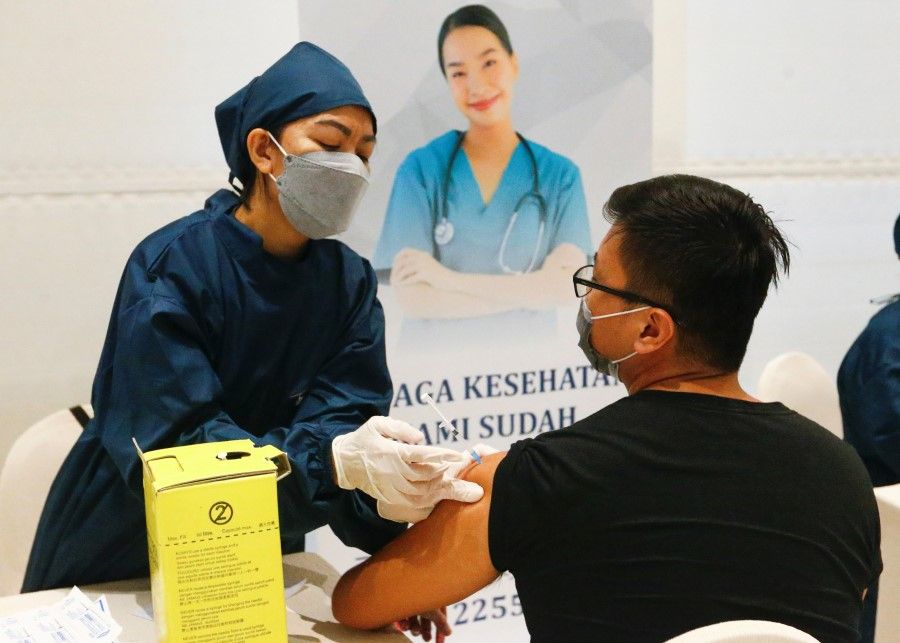Covid-19 pandemic and China's rising soft power in mainland Southeast Asia

The Covid-19 pandemic is the defining crisis of the century. It acutely affects human lives and livelihoods, exacerbates inequalities, pushing millions more into poverty, and accentuates geopolitical competition. In addition, the politicisation of the pandemic in the form of a blame game ramped up especially in the first half of 2020. China was criticised, mainly in the US and Europe, for a lack of transparency in handling the pandemic. In the Southeast Asian region, China received positive reactions for the decisive, swift and effective response to the pandemic. Southeast Asian countries were among the first to offer political, diplomatic, and humanitarian aid to China. Remarkably, Cambodia Prime Minister Hun Sen visited Beijing on 5 February 2020 to show spiritual and diplomatic support to the Chinese government and people in the fight against the pandemic.
To restore its international image, rigorous public diplomacy and concrete actions on the ground have been implemented by China. After stabilising the situation at home, Beijing started providing Covid-19 assistance to other countries and regions. What are the implications of its Covid-19 assistance on China's soft power projection in mainland Southeast Asia? Did China's soft power receive a needed leg-up in the region?
Southeast Asia has become the most fertile ground for China in crafting narratives to support its image building and its handling of the pandemic.
Covid-19 and China's soft power
According to a survey carried out by Pew Research Centre in October 2020, unfavourable views of China's handling of the Covid-19 pandemic were increasing. Across the 14 countries surveyed (Australia, Canada, Japan, South Korea, the US, and other European countries), a median of 61% expressed dissatisfaction with China's way of dealing with the outbreak. Information operations, especially by the US, were carried out to challenge the legitimacy of the Communist Party of China. To counteract this offensive, China launched a communication initiative, mainly in the realm of public health diplomacy.
Southeast Asia has become the most fertile ground for China in crafting narratives to support its image-building and its handling of the pandemic. China has a strong basis for its soft power projection in Southeast Asia, given that these countries are attracted to China's material resources. Economic resources, cultural assets and technological innovations are the main sources of China's soft power. Southeast Asian countries have high economic stakes in their relationship with China, which explains why they have stood firmly with China in combating the pandemic. Southeast Asian leaders protested against the politicisation of the pandemic and called for international cooperation and solidarity in which the World Health Organization (WHO) plays a key role. At the special foreign ministers' meeting on 14 February 2020, ASEAN expressed "full confidence in China's abilities to succeed in overcoming the epidemic". According to the survey on ASEAN perception carried out by ISEAS - Yusof Ishak Institute, China is seen as having provided the most assistance to the region during the pandemic.

China designed a humanitarian plan to gain a geopolitical advantage, and has managed to transform the Covid-19 pandemic into a strategic opportunity to assert its leadership role and expand its geopolitical influence. Health diplomacy has become an important tool to project China's image as a responsible and benign global power. This could of course only be implemented after China had successfully curbed the outbreak at home.
Obviously, China's global influence through soft power projection will be more dynamic in the post-Covid-19 era, but more resources and efforts are needed to better communicate and tell China's story. China's overall image in Southeast Asia, according to the survey by ISEAS - Yusof Ishak Institute, declined slightly in 2020. It means that although China did well in public health diplomacy, its assertive behaviour in the South China Sea, and the perceived risks stemming from overreliance on China, affected China's soft power status.
Mainland Southeast Asia facing the pandemic
Mainland Southeast Asian countries (Cambodia, Lao PDR, Myanmar, Thailand and Vietnam), which were believed to be the most vulnerable to the viral outbreak due to its geopolitical proximity to, and intensive people-to-people contacts with China, have managed the Covid-19 pandemic rather well, measured in terms of number of infections and mortality rate. The economic impact of the pandemic has been monumental. The overall economic performance in 2020 was at its lowest in decades. Thailand was badly hit, with a contraction of 6.1%, followed by Cambodia at 3.1%, and Lao PDR at 2.5%. Myanmar and Vietnam manage positive growth at 1.8% and 2.3% respectively.
Thailand was the first country in Mainland Southeast Asia to declare its first infection case on 13 January (a Chinese woman from Wuhan), followed by a confirmed case in Vietnam on 23 January (a Vietnamese woman returning from Wuhan). Cambodia was next, with its first case recorded on 27 January - a Chinese man from Wuhan. Myanmar and Lao PDR were surprisingly spared from pandemic infections until March. Lao reported its first two cases, two Laotians working in the travel and tourism industry, on 14 March, while Myanmar reported its first two confirmed cases on 23 March - two Burmese men, one returning from the US, and the other from the UK.
Across the region, the approval rate (approve and strongly approve) of the government's response to the pandemic is quite high
Across the region, there have been several waves or spikes of infections. In Cambodia, there were three small infection spikes in 2020 and one big surge from the third wave of community transmission on 20 February. Lao PDR had only an infection spike, which was on 23 November with 14 new cases. Myanmar experienced an abrupt high rate of infections with 100 new cases on 6 September, to an average of more than 1,000 daily new cases from 4 October to 22 December. Thailand experienced two big spikes from late March to early April with the highest rate of new cases at 143 being on 29 March, and from late December 2020 to January 2021 with the resurgence with 809 cases on 21 December. Vietnam had four small spikes in late March with 15 new cases on 30 March, 17 cases on May 7, 49 cases on 31 July, and 16 cases on 15 November.

The measures adopted by the five governments in mainland Southeast Asia include restrictions on the movement of people, surveyance and contact tracing, targeted testing (testing individuals with signs or symptoms and asymptomatic individuals with recent known or suspected exposure). A whole-of-society approach, effective crisis leadership, inter-agency coordination, enhancement of healthcare systems, and evidence-based decision-making with technical support and cooperation from the WHO and international organisations have contributed to effective response mechanism. Across the region, the approval rate (approve and strongly approve) of the government's response to the pandemic is quite high with about 80% in Cambodia, about 55% in Laos, about 42% in Myanmar, about 45% in Thailand, and about 97% in Vietnam.
China's Covid-19 assistance has been integrated into the narrative on the country's grand vision of building a community with a shared future.
China's Covid-19 assistance
China has played a critical role in offering medical information and supplies such as PPE (Personal Protective Equipment), facemasks, and test kits. and deploying medical teams to Southeast Asian countries to combat the pandemic; some have called this assistance "face mask diplomacy" or "Covid-19 diplomacy". Overall, China has harvested significant political leverage from this in the region. Its image in Cambodia has definitely improved.
China sent its first anti-epidemic medical team and medical supplies including test kits to Cambodia on 23 March. It was the first international Covid-19 assistance it offered. Then on 13 and 25 March, China donated medical supplies and masks and PPE to Vietnam and Thailand respectively. On 8 and 9 April, a Chinese medical team arrived in Myanmar and Lao PDR respectively, together with other medical supplies. There were a few more rounds of Chinese assistance after that, particularly to Cambodia, Lao PDR and Myanmar.
China's Covid-19 assistance has been integrated into the narrative on the country's grand vision of building a community with a shared future. For instance, on 22 March, the Communist Party of China sent a congratulatory message to the Lao People's Revolutionary Party on the occasion of the 65th anniversary of its establishment. The message read, "following the outbreak of the Covid-19 in China, the Lao party, government and all sectors of Lao society lost no time in expressing sympathy and solicitude to China for providing financial and material assistance, well embodying the spirit of the China-Laos community with a shared future".
Chinese companies also donated financial assistance to the region. The Alibaba Foundation, Jack Ma Foundation, and Huawei launched global campaigns to provide medical assistance. At the national level, Chinese companies which had invested in Mainland Southeast Asia also donated resources to support national governments. In Myanmar, for instance, China's State Power Investment, Pengxin, Hengyi, CITIC Group, and China Communication Constructions donated medical supplies worth about US$2 million. Chinese NGOs also joined China's mission in offering humanitarian assistance to regional countries. On 4 May, Blue Sky Rescue Team, one of the non-governmental organizations (NGO) in China, sent a team of ten volunteers and donated medical supplies to Cambodia to help fight the pandemic.

China's health diplomacy has been boosted by its information and communication strategy. The Chinese embassies, state-owned media, and think tanks have coordinated in structurally advancing China's Covid-19 diplomacy. The Chinese embassies were unprecedentedly very active in sharing information concerning China's responses to the pandemic, assistance to other countries, and the call for international solidarity in the fight against the pandemic. China Daily created a special section on "Fighting the Covid-19 the Chinese Way", People's Daily has a similar section called "Fight the Novel Coronavirus", and China Global Television Network created a section on "Covid-19 Frontline".
Reactions from mainland Southeast Asia
In terms of strategic trust and partnership, from the Chinese perspective, Cambodia and Lao PDR are in the first tier, Myanmar and Thailand in the second, and Vietnam in the third. Cambodia and Lao PDR are staunch supporters of China's regional initiatives such as the Belt and Road Initiative (BRI) and Lancang-Mekong Cooperation (LMC), while Myanmar and Thailand are somewhat more cautious towards China. Vietnam is very cautious of China's intentions in the region, and has, for instance, shown a degree of resistance to the BRI and opposed China's proposal to form a regional secretariat for the LMC.
In the wake of the pandemic outbreak in early 2020, Cambodia did not impose any restrictions on travellers from China. Prime Minister Hun Sen even planned to visit Wuhan, the epicentre of the pandemic; but due to high health risk, he could only visit Beijing on 5 February. During that visit, he met President Xi Jinping to show support to the Chinese government and people in the fight against the pandemic. This was regarded as a vote of confidence in the Chinese leadership, which was then under strong international criticism. During the visit, he said Cambodia would stand with China in all circumstances and work together to combat the pandemic.
While government leaders praise China's assistance, some local analysts, however, raised concern over the increasing influence of China in the country.
The Lao government highly appreciated China's Covid-19 assistance such as information sharing, capacity building, and the provision of medical supplies. Bounnhang Vorachith, General Secretary of the Lao People's Revolutionary Party (LPRP) Central Committee and President of Laos said China's assistance truly reflected the "time-honoured close friendship and the brotherly and comradely relationship of cooperation and mutual assistance between the two parties, countries and peoples, and vividly demonstrates the spirit of the Laos-China community with a shared future".
Myanmar President U Win Myint also expressed his appreciation of China's assistance in the fight against the pandemic, and articulated his confidence in the leadership of the Chinese government in controlling the pandemic. He pledged to advance and deepen the China-Myanmar Comprehensive Strategic Cooperative Partnership, and build a community with a shared future. At the reception of the fourth batch of medical supplies from China on June 9, Union Minister for Health and Sports Myint Htwe said China's assistance significantly helped Myanmar in the prevention, treatment and control of the Covid-19 pandemic.
While government leaders praise China's assistance, some local analysts, however, raised concern over the increasing influence of China in the country. U Maw Htun Aung, Myanmar country manager of the Natural Resource Governance Institute, said Chinese humanitarian assistance aimed to foster China's influence in the country, while Chinese companies tried to assure political support and enhance their public image. "China is seeking both political and economic gain by promising economic support and delivering aid to Myanmar in a time of crisis. They know that Myanmar needs both", he added. Another analyst Khin Khin Kyaw Kyee, the head of the China desk at the Institute for Strategy and Policy, argued that Chinese aids serve to project China as a benign power and a responsible member of the global community. "This aid to some extent can help China expand its political influence in the recipient countries," she added.
The pandemic crisis accentuates the competition between Vietnam and China, from sovereignty disagreements in the South China Sea to economic disputes.

Thailand-China bilateral relations emerged stronger during the pandemic. During a phone conversation with a Chinese diplomat in Bangkok on 17 March 2020, Thai Prime Minister Prayut Chan-o-cha said that "bilateral ties will emerge even stronger in this joint campaign against the virus". Meanwhile, Deputy Prime Minister Anutin said that China's assistance exemplified the special friendship of "Thai and China as one family". He shared the view that the bilateral relationship would be more consolidated.
In addition, at the reception of medical supplies donated by China in June 2020, Thai Prime Minister Prayut Chan-o-cha said the longstanding relationship with China would continue in all aspects, including social, cultural and economic ties. At the meeting with Chinese foreign minister Wang Yi on 15 October, Prayut appreciated China for making the Covid-19 vaccine a "global public good" and pledged to build the Silk Road of Health and support the synergies and connectivity between the "Eastern Economic Corridor" with the Guangdong-Hong Kong-Macao Greater Bay Area. In April 2020, Chuan Leekpai, President of the National Assembly of Thailand, thanked China for helping Thailand and looked forward to welcoming Chinese tourists as soon as the pandemic situation improved.
In January 2021, Vietnamese Prime Minister Nguyen Xuan Phuc praised China's fight against the pandemic at home and abroad. He said that learning from its experience in handling Severe Acute Respiratory Syndrome (SARS), China would secure an early victory against the epidemic. Although Vietnam and China have forged cooperation on the Covid-19, deep distrust remains. A Vietnamese government official reportedly said that "the Chinese government won't give out accurate numbers, so we can't simply accept what they tell us". The pandemic crisis accentuates the competition between Vietnam and China, from sovereignty disagreements in the South China Sea to economic disputes.
China's vaccine diplomacy in promoting vaccine multilateralism since late 2020 and making vaccine a global public good, has been applauded. To some analysts, China's vaccine diplomacy aims to "increase China's global influence and iron out...geopolitical issues" or "advance its regional agenda, particularly on sensitive issues such as its claims in the South China Sea". Addressing the Lancang-Mekong Cooperation summit in August 2020, Chinese Premier Li Keqiang pledged that China would prioritise providing Covid-19 vaccines to Mainland Southeast Asian countries. The regional countries have responded positively, except for Vietnam which seeks other sources of vaccine.
In January 2021, Thailand announced plans to purchase two million doses of Sinovac vaccine. There are three phases of delivery: 200,000 doses to arrive by February 2021, another 800,000 doses to arrive by March, and 1 million in April. In January, China promised Myanmar 300,000 doses of vaccines. In February, Lao PDR received 300,000 doses of vaccines developed by China National Pharmaceutical Group (Sinopharm). Cambodia has received 1.3 million doses of vaccine from China (which arrived in March and April) and is going to receive another 1 million doses in 2021. Vietnam is reluctant to administer Chinese vaccines, with some leaders raising concerns over transparency and legitimacy relating to China's vaccine diplomacy in the region, while others remain sceptical of China's intentions.

China's window of opportunity
China has transformed the Covid-19 crisis into a window of opportunity to boost its soft power through sharing information and knowledge, providing medical supplies, deploying medical teams, and providing vaccines. China's soft power has been slightly enhanced, based on the perception of policy makers or ruling elites, and its geopolitical influence has increased in Mainland Southeast Asia. The regional countries have applauded and appreciated China for successfully curbing the pandemic outbreak, for the provision of Covid-19 assistance, and for the promotion of vaccine diplomacy. Nevertheless, there are some concerns with regard to China's strategic intentions.
Cambodia and Lao PDR are the most receptive to China's assistance, without much questioning of China's strategic intention. Thailand and Myanmar are also positive towards China, while Vietnam remains the most sceptical towards China's regional intention, due to the lingering tensions in the South China Sea and relatively high anti-China national sentiments in Vietnam. The prospect of China's soft power in the region will continue to rise thanks to its economic resources and to its coalition-building on international issues such as the Covid-19 pandemic. But there are remaining concerns over China's strategic intentions. Although China is generally regarded as the most influential economic power in the region, its growing assertive or even dominant behaviour will produce a backflow to its goodwill diplomacy and soft power projection.
This article was first published as 2021/66 "Fighting COVID-19: China's Soft Power Opportunities in Mainland Southeast Asia" by Chheang Vannarith.
